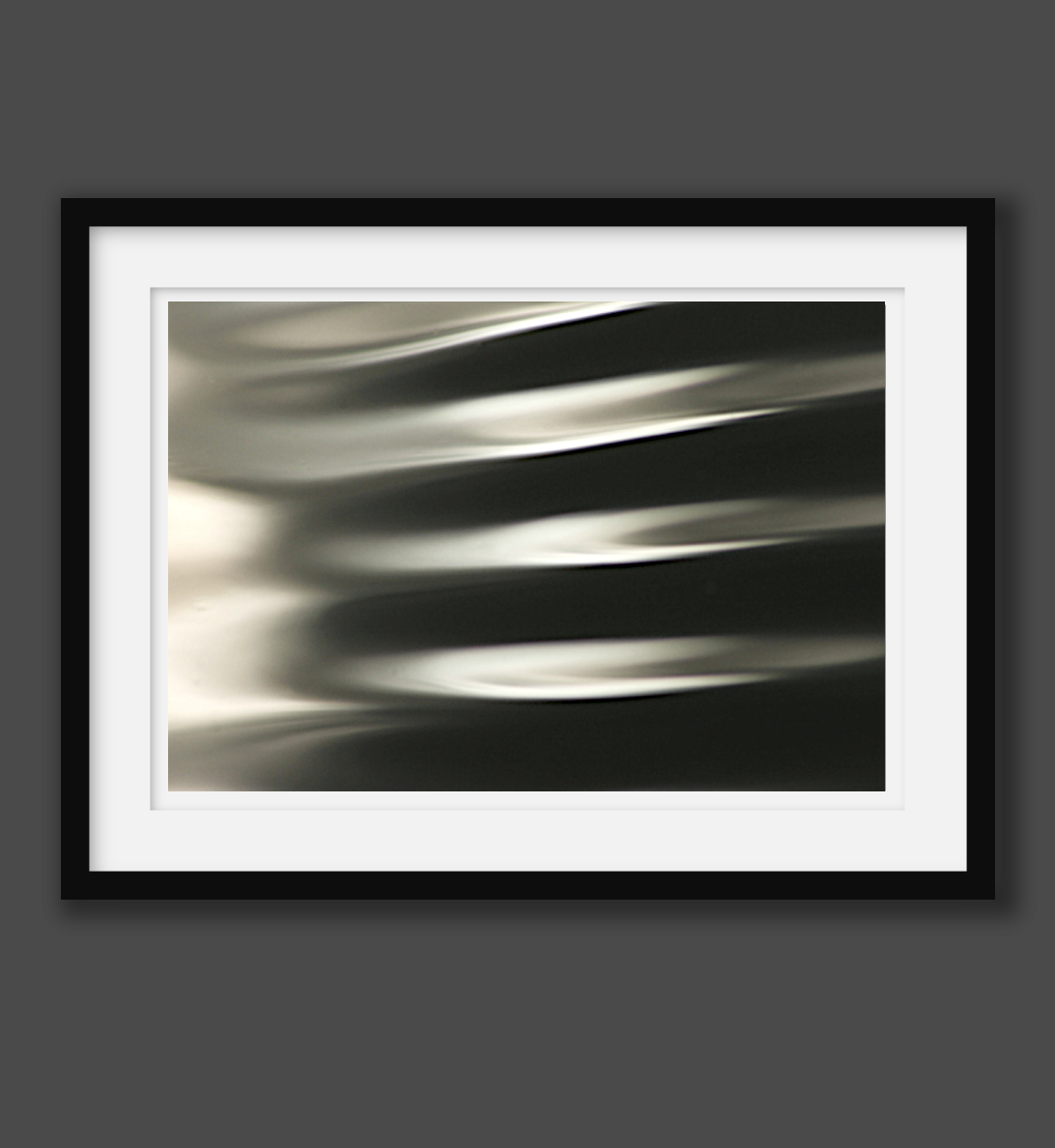

Title: Liquid Metal Water Abstract Art Photo Artist Csrlos Ariel Quinones
Shipping: $75.00
Artist: N/A
Period: Contemporary
History: Art
Origin: North America > United States
Condition: Excellent
Item Date: N/A
Item ID: 4334
Large limited edition signed image of water and by noted Mexican, based photographer Artist Csrlos Ariel Quinones. The work was created with a camera and printed. Last 3 years i been taking photos in natural fresh water formations that we call cenotes at the jungle of Quintana Roo Mexico. I found great and perfect reflections that seems to be like the water is an artist it self!!! Great abstract forms and spectacular colours i had capture with my camara at the right moment when all the weather conditions like the light and the wind are in my favor and the reflections of the water proyect like a mirror an incredible image wich results a perfect art photo that most of the people have never seen before. Some times i have to stay during 4 or 5 hours waiting for the perfect photo shot, and i had took 800 different shots in order to select only one. My wish is to show with my art photos the beauty of the WATER an how important is to take good care of the water as a natural element that we all need to live and survive, we are water, we need water, and we have to take care about the water.
The history of abstraction in photography began in the early 20th century as photographers moved beyond the traditional goal of capturing reality to explore form, light, and composition for their own sake. Influenced by modernist art movements such as Cubism, Dada, and Surrealism, pioneers like Alvin Langdon Coburn, László Moholy-Nagy, and Man Ray began experimenting with photograms, multiple exposures, and unusual perspectives to create images that challenged viewers' perceptions. Abstraction in photography often emphasized texture, pattern, and geometry, distancing the subject from its literal meaning. This movement allowed photography to be seen as an expressive art form, not merely a documentary tool, and it laid the groundwork for later experimental and conceptual practices. As digital tools expanded creative possibilities, abstraction has continued to evolve, blurring boundaries between photography and other visual media.
Link: http://en.wikipedia.org/wiki/Photos
Most photographs are created using a camera, which uses a lens to focus the scene's visible wavelengths of light into a reproduction of what the human eye would see. The process of creating photographs is called photography. (Photo) "representation by means of lines" or "drawing", together meaning "drawing with light". The first permanent photograph was made in 1825 by a French inventor, Joseph Nicéphore Niépce, building on a discovery by Johann Heinrich Schultz (1724): that a silver and chalk mixture darkens under exposure to light. Niépce and Louis Daguerre refined this process. Daguerre discovered that exposing the silver first to iodine vapor, before exposure to light, and then to mercury fumes after the photograph was taken, could form a latent image; bathing the plate in a salt bath then fixes the image. These ideas led to the famous daguerreotype.
The daguerreotype had its problems, notably the fragility of the resulting picture, and that it was a positive-only process and thus could not be re-printed. Inventors set about looking for improved processes that would be more practical. Several processes were introduced and used for a short time between Niépce's first image and the introduction of the collodion process in 1848. Collodion-based wet-glass plate negatives with prints made on albumen paper remained the preferred photographic method for some time, even after the introduction of the even more practical gelatin process in 1871. Adaptations of the gelatin process have remained the primary black-and-white photographic process to this day, differing primarily in the film material itself, originally glass and then a variety of flexible films. Color photography is almost as old as black-and-white, with early experiments dating to John Herschel's experiments with Anthotype from 1842, and Lippmann plate from 1891. Color photography became much more popular with the introduction of Autochrome Lumière in 1903, which was replaced by Kodachrome, Ilfochrome and similar processes. For many years these processes were used almost exclusively for transparencies (in slide projectors and similar devices), but color prints became popular with the introduction of the Chromogenic negative, which is the most-used system in the C-41 process. The needs of the movie industry have also introduced a host of special-purpose systems, perhaps the most well known being the now-rare Technicolor.